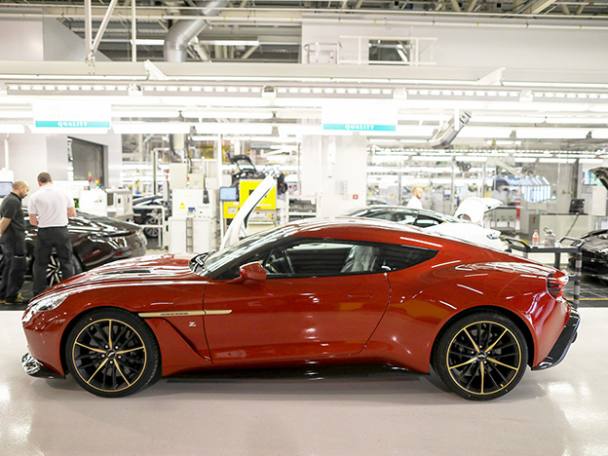Aston Martin Lagonda (AML) shares crashed by almost a quarter after the luxury car manufacturer lowered production targets, just a week before its half-year results are due.
When Aston Martin listed on London's main market in October 2018, it targeted the production of 6,200-6,400 cars for 2018, 7,100-7,300 cars in 2019 and 9,600-9,800 cars in 2020. It began well on this front, edging ahead of its 2018 objective with 6,441 vehicles. It unveiled its first electric model, the Rapide E, earlier this year, while its development of its first SUV, the DBX, and the Valkyrie, its first hypercar, remain on track. In the medium-term, Aston aims to sell 14,000 cars a year by 2022.
But Aston’s 2019 production volumes have slid off the tarmac. The company announced that it now only expects to sell between 6,300 and 6,500 cars this year, citing weakness in the UK and European markets. Aston is “planning prudently for 2020”, it said. It also announced that it has provided £19m against consultancy income recognised in the second quarter of 2018. “The commercial position on this contract has deteriorated with significant doubt remaining over the outstanding receivable”, it admitted. Aston will report this figure in its first half results on 31 July.
Earlier this month the manufacturer’s biggest shareholder, Italian private equity group InvestIndustrial, raised its position by 3 per cent, through its Strategic European Investment Group subsidiary. The group agreed to buy 6,840,090 shares at £10 each, taking its overall position to 33.97 per cent. Aston’s shares are now nearly 60 per cent down since listing at £19 a share, in an IPO process that carried £136m in costs.
Chief executive Andy Palmer said: “We are disappointed that short-term wholesales have fallen short of our original expectations,” and that “we are today taking decisive action to manage inventory”. At the beginning of the year, the company said that it was already operating under ‘no-deal’ Brexit conditions, as lead times for vehicles threatened to stretch across the UK’s initially-scheduled Brexit departure date of 29 March. Some of its UK suppliers have struggled to keep up with the demands of its production ramp-up, while the company is restricted in its ability to switch to foreign suppliers owing to World Trade Organisation ‘rules of origin’, which require products to be made with around 55 per cent of components derived domestically.
Earlier this month, Jefferies upgraded its Aston rating from ‘underperform’ to ‘hold’. The broker maintained its concerns over balance sheet liquidity, putting Aston forward "as a candidate for a convertible to complete the launch of DBX", but suggested that the launch, a lack of major carbon dioxide constraints and a “bumper year” for the company’s special edition models could contribute to a stronger 2020. Without an accompanying pre-release of figures guiding on profit, cash flow and liquidity within Aston's warning on volumes, "it's difficult to gauge by how much they may or may not need to raise capital", said Jefferies analyst Philippe Houchois, following the announcement.
The company said that it is enacting measures to improve efficiencies and reduce its fixed costs. Aston’s adjusted operating profit margins for 2019 are now expected to come in around 8 per cent, below previous guidance of 13 per cent. Capital expenditure will be cut to around £300m from a prior range of £320m-£340m.











